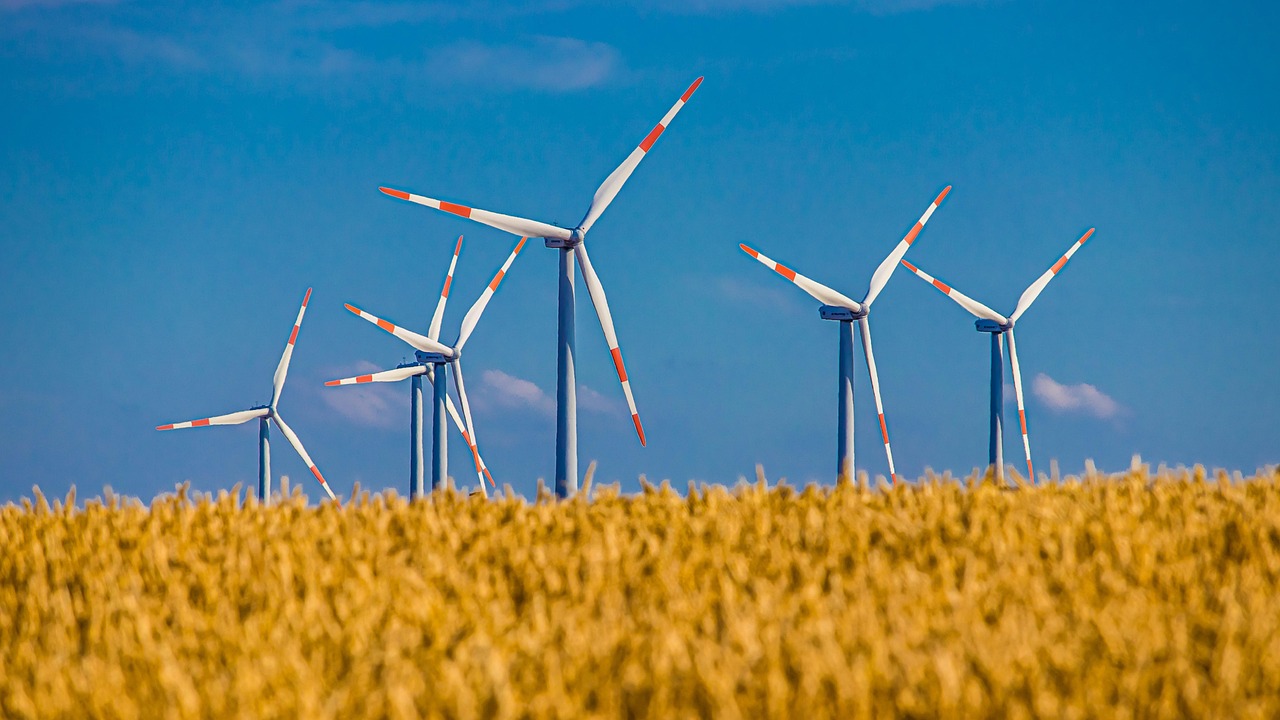How Wind Turbine Power Plants Work: A Complete Guide

Strong 8k brings an ultra-HD IPTV experience to your living room and your pocket.
Wind energy is becoming a key player in the global shift towards sustainable living. This article delves into wind turbine power plants, explaining their operation, significance in green energy solutions, and their role in advancing sustainability. From understanding wind mechanics to exploring turbine functionality, it covers all you need to know about this essential renewable energy source.
Fundamentals of Wind Energy Conversion
Wind turbines convert wind kinetic energy into mechanical power. This process begins when the wind encounters the turbine's blades. The blades' design effectively captures wind energy, causing them to rotate. The blades are connected to a shaft, which turns along with them.
Inside the turbine, this spinning shaft rotates a generator and produces electricity. The entire process depends on the kinetic energy of the wind. Wind speed, turbine design, and the technology in the generator all influence how much electricity we can extract from a gust of air.
Components of a Wind Turbine
Wind turbines are complex assemblies that convert wind energy into usable electricity via several principal components. Each component is vital in this energy transformation process, allowing them to operate efficiently and generate power.
- Rotor Blades and Hub: These are technically the "hands" of the wind turbine, catching the wind just like how hands would catch air. When wind hits these blades, it pushes against the curved surface, thereby causing the blades to turn with the hub. That is the fundamental beginning of harnessing wind energy into mechanical energy.
- Gearbox and DriveTrain: It acts like a car gearbox, stepping up the rotation speed of the turbine shaft from an almost slow spin due to the rotor blades toward a speed sufficient to generate electricity efficiently. It is, therefore, an important intermediary between the blade's slow pace and the generator's fast demands.
- Generator: This is the heart of the machinery—the moving parts of the turbine produce mechanical energy, which the generator then converts into electrical energy. In this part, the wire coils and magnetic fields interact to create an electrical current whenever the turbine spins.
- Tower: The tower lifts the turbine’s blades and hub up into the stronger winds at higher altitudes, increasing the turbine's access to wind resources. It's a simple yet vital function, providing the height necessary for more effective energy production.
- Nacelle: It is the part of the wind turbine containing the control centre and all major components, such as the gearbox, generator, and drive train. It lies atop the tower, protecting the turbine's mechanics from wind and rain exposure but placing them within easy reach for maintenance.
Types of Wind Turbines
Wind turbines are primarily categorised into two types based on the orientation of their main rotational axis.
- Horizontal-Axis Turbines: These are the most common and widely used type of wind turbines. They look like conventional windmills, with a primary rotor shaft and a generator on top of a tower, facing the wind. Its design is efficient and effective for areas with steady wind directions, making them the best choice for large wind farms.
- Vertical-Axis Turbines: Unlike their horizontal counterparts, a vertical-axis turbine features a vertical rotor shaft. The obvious advantage here is extreme variability in wind directions; the turbine can capture wind from any direction. Although less common, such turbines are particularly useful in urban or residential settings where wind patterns can be less predictable.
Wind Turbine Power Plant Layout
A wind turbine power plant, commonly referred to as a wind farm, consists of several interconnected turbines that generate large-scale electricity. The turbines' orientation is carefully planned to maximise wind catching and reduce interference between other turbines. The electricity in each turbine is stepped up to a high voltage at a substation for long-distance transmission.
Site Selection and Environmental Considerations
Selecting an apt location for a wind turbine power plant depends on the availability of wind resources, proximity to transmission lines, and the impact on the environment. This includes bird migratory routes, noise levels, and other visual impacts that need to be taken into consideration to minimise the ecological footprint of the plant.
Economic and Social Impact
Wind energy is the one cost-effective renewable energy source. It attracts jobs in manufacturing, installation, and maintenance, which can really boost the local economy. Some also consider wind farms a reliable source of income for landowners who rent their property to install turbines.
Conclusion
Wind turbines offer a clean, efficient way to reduce our carbon footprint and keep our planet green. As technology advances, the efficiency and effectiveness of wind energy continue to improve, making it an increasingly vital component of global energy strategies. So, the next time you spot a wind turbine, you’ll not have to guess how it’s working hard to power our homes and businesses sustainably.
Note: IndiBlogHub features both user-submitted and editorial content. We do not verify third-party contributions. Read our Disclaimer and Privacy Policyfor details.








